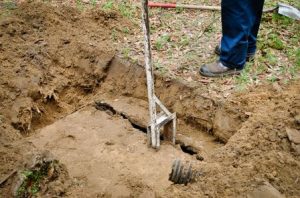There are many people who call their local septic tank professionals at the first sign of a problem and let them know that their tank is full. However, the truth is that your septic tank should always be “full.” Septic tanks contain liquids that go almost all the way to the top of the tank. There is typically only about 8 to 12 inches of space between the top of the tank and the liquid level, and that’s not very much space. So for the most part, a “full” septic tank isn’t the issue, but an “overfull” of a septic tank, on the other hand, occurs when the liquid rises above the tank’s outlet pipe, which can present big problems for home and business owners.
 There are a number of things that can cause a septic tank to become “overfull.” One problem is that backup can congregate in the cleanout that exists between your home or business and the septic tank. This cleanout needs to be checked periodically to see if any backup has formed, and if so, a septic professional will need to come in and assess the issue with your tank.
There are a number of things that can cause a septic tank to become “overfull.” One problem is that backup can congregate in the cleanout that exists between your home or business and the septic tank. This cleanout needs to be checked periodically to see if any backup has formed, and if so, a septic professional will need to come in and assess the issue with your tank.
Another problem might be the absorption area for your septic tank. If your absorption area is not accepting wastewater from your home, then your septic tank and septic system will not operate properly. You can have your septic tank pumped out to temporarily relieve the issue, but chances are, it will present further problems for you if the absorption area continues to struggle to keep up.
Your plumbing system might also be the problem when it comes to your septic tank. If wastewater from your home isn’t reaching the tank, it may be because of an issue within your plumbing drains and pipes.
Diagnosing a septic tank issue on your own can be a tricky thing, and it’s not always just a matter of having a “full” septic tank. There are a number of issues you can encounter with a septic system, so if you suspect trouble, you shouldn’t hesitate to call on a professional. Carolina Septic Pro can check out your septic tank and let you know if you need to have service done to it. Call us at 704-626-6622 today to schedule septic tank inspections, maintenance, and repairs.
